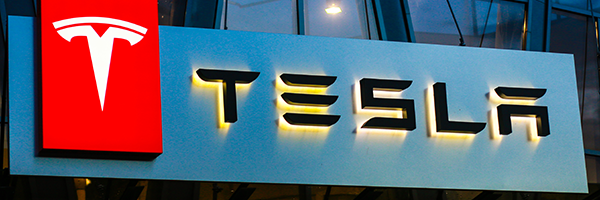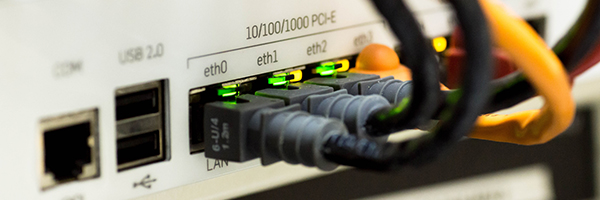Morning Briefing

January 27, 2024 | AAPL, Daily JAM, Mid Term, Morning Briefing |
It’s a Federal Reserve meeting week, but I expect Apple’s (AAPL) earnings report for its December quarter to be the big event of the week. With the potential to move the tech sector and the market.

January 26, 2024 | Daily JAM, Jubak Picks, Morning Briefing, Top 50 Stocks, V |
After the close yesterday, Visa (V) reported earnings of $2.41 a share (after adjusting for one-time items) for the December 2023 quarter. (That the company’s fiscal first quarter.) Analysts had been looking for $2.34 a share in adjusted earnings. Revenue grew 8.8% to $8.63 billion, again beating analyst forecasts for $8.55 billion in revenue. Visa said payments volume grew 8%, and that its processed transactions rose 9% in the period. And yet the stock was down $4.70 a share, or 1.72%, to $267.91 at the close today, Friday, January 26. Why?

January 25, 2024 | Daily JAM, Morning Briefing, Short Term |
U.S. Gross Domestic Product (GDP) grew at an annual 3.3% rate in the fourth quarter, the Commerce Department announced today. That was down from the 4.9% annual growth rate in the third quarter, but substantially above the 2.0% rate expected by economists. For the full year, the US.economy expend at a 3.1% rate.

January 24, 2024 | Daily JAM, Morning Briefing, Short Term |
Today, after the market close, Tesla (TSLA) reported fourth-quarter earnings of 71 cents a share. The missed the consensus Wall Street forecast of 73 cents. Sales of $25.2 billion missed forecasts for $25.6 billion. But I’d argue that the earnings and sales misses weren’t the worst news in the report.

January 23, 2024 | Daily JAM, MMM, Morning Briefing, Short Term |
3M (MMM) fell 11.03% today, Tuesday, January 23, the most in nearly five years, after announcing projections for 2024 sales and earnings below Wall Street expectations. Now granted that 3M is a special case–the company is engaged in a huge restructuring effort that has met with a high degree of investor skepticism. In short, investors doubt that the company can pull it off without cutting its dividend. So the stock is especially sensitive to any news that suggest that the restructuring is failing. But the stock’s big drop today is also an indication of how worried this market, trading at record highs, is about the possibility that earnings growth for the fourth quarter, the subject of the current earnings season, won’t support prices at these levels.

January 22, 2024 | Daily JAM, Morning Briefing, Short Term |
On Friday the University of Michigan’s consumer sentiment index reported a rise of 9.1 points, the biggest monthly advance since 2005, to 78.8. The preliminary January reading stands at the highest level since July 2021. Consumer sentiment jumped 13% in January to its highest level since mid-2021. Since November, consumer sentiment has risen 29%, marking the largest two-month increase in more than 30 years. And that was just the top line in a report with lots of good news for stocks and the current rally.

January 21, 2024 | Daily JAM, Morning Briefing, Short Term |
The Magnificent Seven stocks accounted for virtually all of 2023’s 24% stock market gain. The Magnificent Seven stocks are Alphabet (GOOG), Amazon (AMZN), Apple (AAPL), Meta Platforms (META), Microsoft (MSFT), Nvidia (NVDA), and Tesla (TSLA). And according to Wall Street analysts these stocks are set to do it again when they report fourth quarter earnings beginning this week (on Wednesday, Jonuary 24, with Tesla and continuing into the following week.The Magnificent Seven are expected to deliver combined earnings growth of about 46%, according to data from Bloomberg. That’s down slightly from the third quarter’s 53% expansion, but it still dwarfs almost all of the main sectors in the S&P 500 Index. It’s not surprising, therefore, that the long Magnificent Seven (and other tech stocks) is the most common trade in the current market. Nor that the options market is pricing in “virtually no risk” for mega-cap stocks, Brian Donlin, head of equity derivatives strategy at Stifel Nicolaus, told Bloomberg. All of which makes the recent weakness in some of the Mgnificent Seven stocks a bit worrying. Apple and Tesla are most likely to deliver disappointing numbers.

January 19, 2024 | Daily JAM, Long Term, Morning Briefing, Top 50 Stocks, TSM |
Shares in Taiwan Semiconductor Manufacturing (TSM) were up almost 10% yesterday after the company announced an unexpectedly strong return to growth. That has in turn pushed chip stocks higher across the sector. For example, shares of Advanced Micro Devices (AMD), which were already moving higher this week ahead of the news, hit a new record high today. The good news from semiconductor companies and the moves on their stock have also rallied the general market.

January 18, 2024 | Daily JAM, Morning Briefing |
Today, January 18, with plenty of time to beat the January 19 deadline for funding the government or shutting it down, Congress passed yet another temporary spending bill. The interim measure would fund some agencies-—set to run out of money after Friday–through March 1 and others through March 8.

January 18, 2024 | Daily JAM, Morning Briefing, Videos |
Today’s video is Exogenous Factors: Middle East and Taiwan. The market has been focused on earnings and the Fed as of late, but, there are a lot of big exogenous factors that should also be on the radar. Two of those factors are Taiwan and the Middle East.

January 17, 2024 | Daily JAM, Morning Briefing, Short Term |
Last month, the bond market was almost fully pricing the first interest rate cuts from the Federal Reserve in March. Now, though the odds for a 25 basis point cut are down to more like 50/50. Today, January 17, the yield on the 10-year Treasury rose another 5 basis points to 4.10%.

January 16, 2024 | Daily JAM, Morning Briefing |
Mae West said, “Too much of a good thing is never enough.” For the financial markets that’s just not true, however. The markets are prone to swing to excess and then to painfully retrace the extreme end of the swing. You can see it happening now with interest rates and the bond market.














